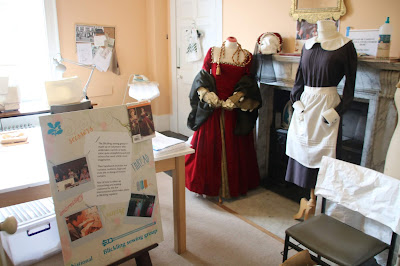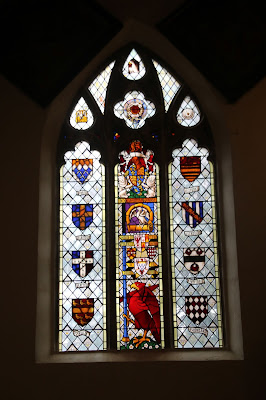Blinking Estate was the target for this weekend. It is in Norfolk
It was a cold wet windy day, but we wanted to get out of the House
This estate is large but we couldn't walk around the gardens
Due to the high winds.
The house itself was by Ticket Entry so we had to wait around.
Meanwhile, the views of the house were great.
It had a Clock that didn't work but would have been the center of attention in its heyday.
The house was Brick not stone.
This is a wool and landowners houses, we were glad to get in out of the wet conditions
Once inside the house revealed that is was a
masterpiece Wood carving.
The master of the Hosue had the Keys to London
and he liked to show them off.
The usual splendor Paintings
But the ceilings were Wooden Panels in the original parts
Carved Fireplaces
That had a lot of detail.
Wooden Staircases
They even had a room that shows the restoration of costumes.
In the modern wing, e.g. the 1800s were the plaster ceilings.
But still the splendid wooden fireplaces
The gallery was still being restored but it did show the tapestries
They had faded badly but you could still see the design on them.
The last room of the house was the dining room.
Again is it's splendid Wood.
So off we went to the Next Place.
Oxburgh Hall
We arrived Just after Lunch and it was still cold and windy. the rain had stopped. So quickly into the Gardens. These would have been impressive in Spring, We were too early.
But the gardeners were about
And the gardens were ready to pop.
The Hall itself is surrounded by a mote. and resembles a Castle. But has got no fortifications.
By what house and security would have been good.
The mote appeared to be very deep.
Once inside the courtyard, the front door was on the far side.
So not your usual type of entrance.
Once inside, we found part of the place is off limits and it was very dark.
The stairway was hand carved and polished beautifully.
The lions were grand.
As for the furniture, that was wooden.
The ceilings were panel board and plaster. I don't get to see many of those.
The Dining side table was a work of art in itself.
Jennifer Loved the Library
Once outside again we made for the church in the trees.
This was their private chapel.
And it is still a functioning church.
The Catholic Church has been running since the 1200s.
The windows were recent though
Even some of the Statues were recent. 1800's
This window was from the 1600s
All for an archbishop at some time that died there.
So we walked past the Hall again and went to the town Church.
This was an Abbey but during the Reformation, it was destroyed. But part of it was saved and still functions as a Church.
Part of it has the original soft stone statues and sculptures
This was common in churches before the Reformation. Today nearly all are gone.
this church had a lot. A beautifull collection.
And the local knew it as well and they had restored
part of the church to what it would have been like back them.
So a Church that was an Abbey and is now holds some great surprises for thos willing to look.











































